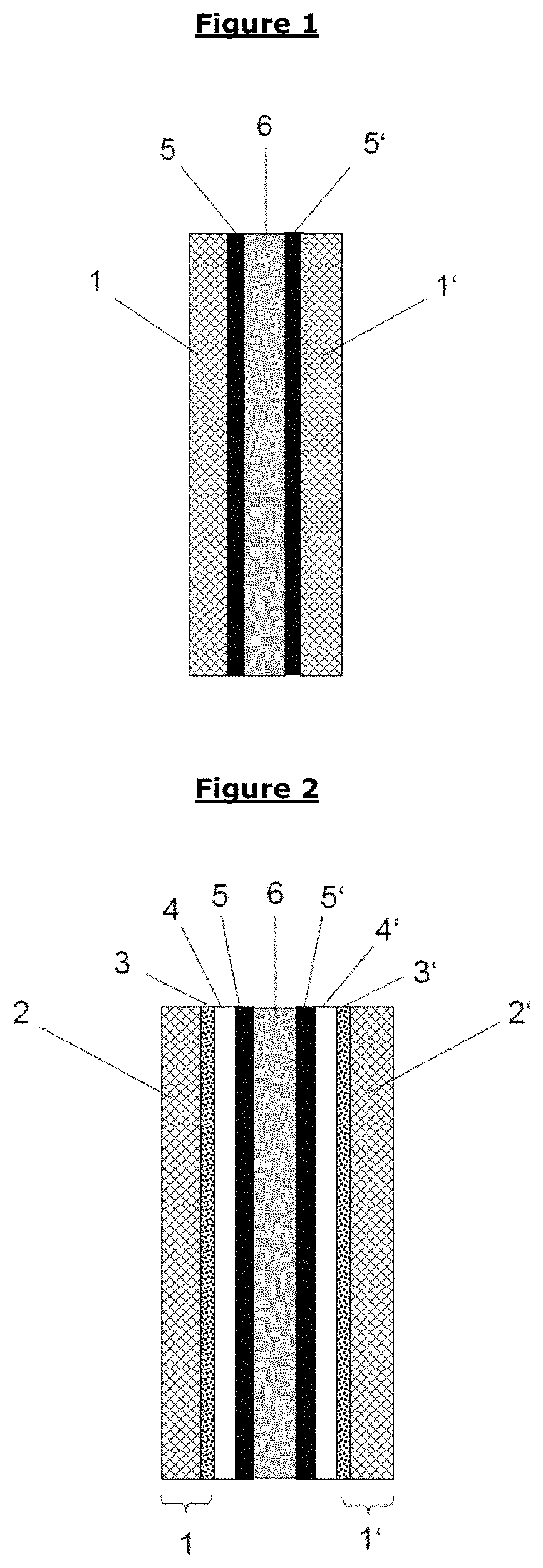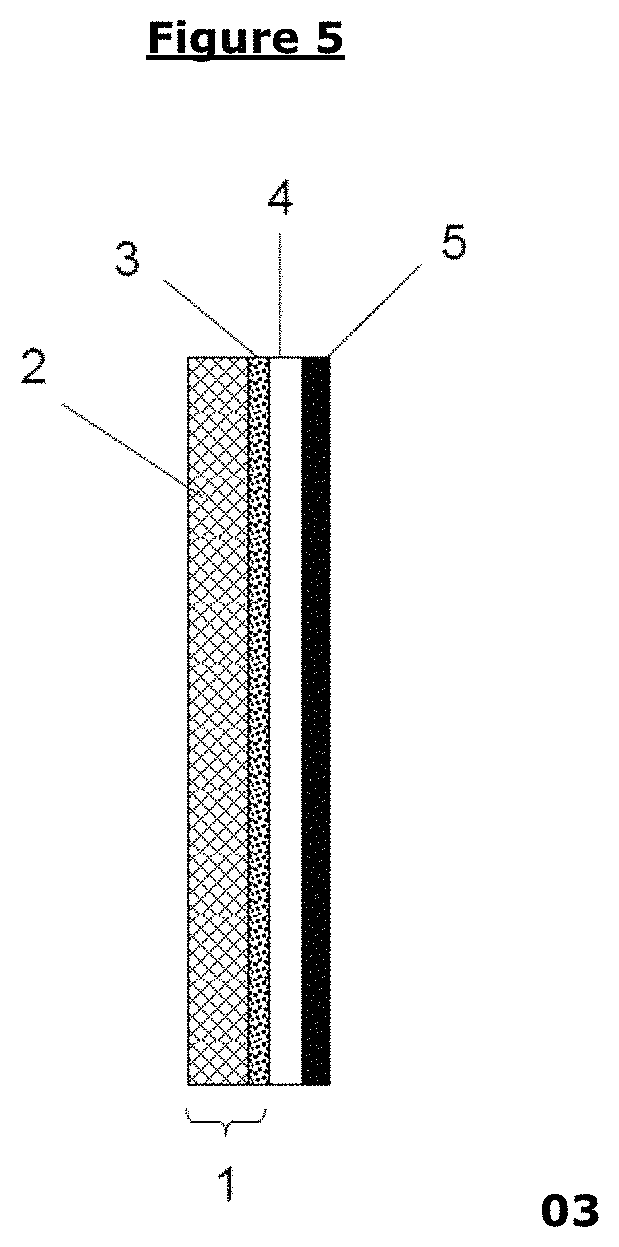Barrier layer for corrosion protection in electrochemical devices
a barrier layer and electrochemical technology, applied in the field of electrochemical and fuel cells, can solve the problems of cell not working anymore, sublayers subject to corrosion, and even more damage to the anode side of the mea, and achieve the effect of improving stability and corrosion protection
- Summary
- Abstract
- Description
- Claims
- Application Information
AI Technical Summary
Benefits of technology
Problems solved by technology
Method used
Image
Examples
example 1
Preparation of Catalyst-Coated Membranes (CCM)
[0147]A catalyst-coated membrane (“CCM”) is provided having an anode catalyst loading of 0.1 mg Pt / cm2 (based on Pt / C-catalyst Elyst® 20Pt 0350 from Umicore AG & Co KG, Hanau, Germany) and a cathode platinum loading of 0.5 mg Pt / cm2, based on Pt black (Umicore AG & Co KG, Hanau, Germany) mixed with IrO2 / TiO2 catalyst Elyst Ir75 0480 (Umicore AG & Co KG) in a ratio of 30:70 applied on both sides of an ionomer membrane Nafion® 212CS (thickness 50.8 μm, DuPont, USA). The catalyst layers are applied by standard decal methods. The active area of both catalyst layers is 71 mm×71 mm and the overall membrane size is 110 mm×110 mm.
example 2
Preparation of a GDL with Barrier Layer (BL)
[0148]To a water-based PTFE dispersion TF 5032Z (Dyneon GmbH, Burgkirchen, Germany), containing 55.2 wt.-% PTFE with average particle size of 160 nm and 3.8 wt.-% emulsifier, solvent dipropylene glycol (Merck Cat. No. 803265) is added to obtain a dispersion with the following composition (wt.-%):
[0149]
PTFE (solid polymer)9.0wt.-%DI Water:6.7wt.-%Emulsifier:0.6wt.-%Dipropylene glycol:83.7wt.-%Total100.0wt.-%
[0150]The dispersion is then stirred for 30 minutes. Thereafter, 30.0 grams of a supported conductive metal oxide IrO2 / TiO2 (Elyst® Ir75 0480; Umicore AG & Co KG) is then added to 70.0 grams of the PTFE dispersion prepared above and the mixture is thoroughly dispersed in a bead mill (grinding media zirconia, ca. 1 mm diameter, milling time 30 minutes at about 2.000 rpm). The resulting barrier layer ink contains 30.0 wt.-% IrO2 / TiO2 oxide material and 6.3 wt.-% PTFE. This results in a ratio of Ir oxide material / PTFE=4.76:1, i.e. a binder ...
PUM
| Property | Measurement | Unit |
|---|---|---|
| electrical conductivity | aaaaa | aaaaa |
| thickness | aaaaa | aaaaa |
| electrical conductivity | aaaaa | aaaaa |
Abstract
Description
Claims
Application Information
 Login to View More
Login to View More - R&D
- Intellectual Property
- Life Sciences
- Materials
- Tech Scout
- Unparalleled Data Quality
- Higher Quality Content
- 60% Fewer Hallucinations
Browse by: Latest US Patents, China's latest patents, Technical Efficacy Thesaurus, Application Domain, Technology Topic, Popular Technical Reports.
© 2025 PatSnap. All rights reserved.Legal|Privacy policy|Modern Slavery Act Transparency Statement|Sitemap|About US| Contact US: help@patsnap.com



